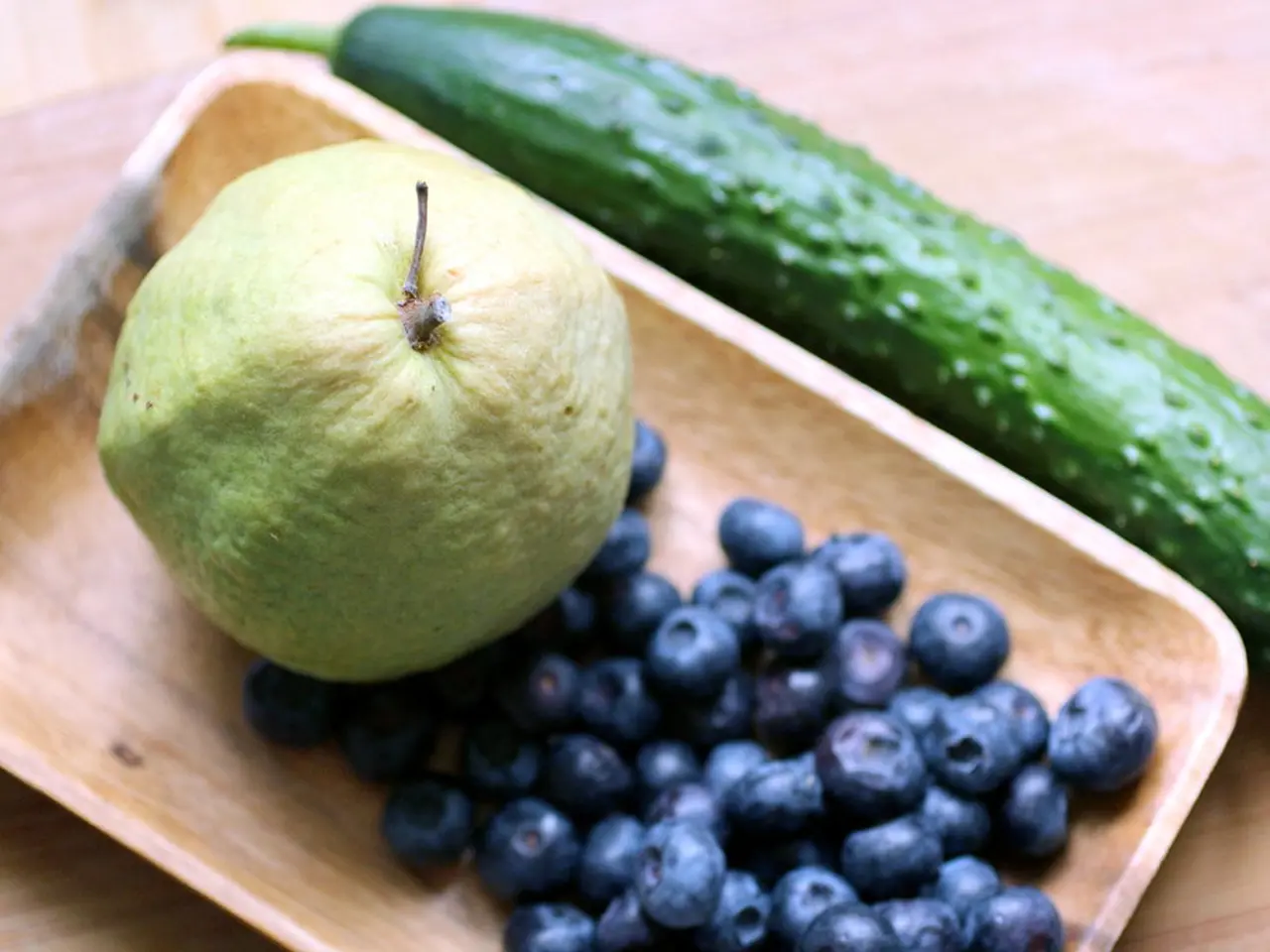Signs to Detect Ripeness When Harvesting Cucumbers for Pickling: Crucial Harvest Markers
Harvesting the perfect pickling cucumber is an art that requires careful timing and attention to detail. To ensure optimal flavor and crispness, pickling cucumbers should be picked when they are small, firm, and have a deep green color, typically around 3 to 6 inches long, before seeds mature and skin hardens. Regular picking encourages continuous production and helps avoid overripe, bitter cucumbers.
When it comes to storing fresh pickling cucumbers before processing, keeping them unwashed until use can help extend their freshness. Each cucumber should be wrapped in a paper towel to absorb excess moisture, then placed in a sealed plastic bag or airtight container. Store these in your refrigerator's crisper drawer to maintain cool, humid conditions. To keep the cold consistent, avoid frequent fridge door openings near the cucumbers. If sliced, store them in an airtight container, placing a dry paper towel underneath to keep slices dry and crisp.
For preserving cucumbers as pickles, it's essential to use firm, blemish-free cucumbers. Prepare sterilized jars and pack them with flavorings like garlic, dill, peppercorns, and horseradish. Boil a vinegar-based pickling mixture briefly, then pour it hot over the cucumbers in the jars, ensuring full coverage. Seal the jars tightly and store them in a cool, dark place above freezing. Properly canned pickles can last 1–2 years, retaining their crispness and flavor if sealed and stored well.
In summary, harvesting early, storing properly cold and dry before pickling, and using good canning practices will optimize the flavor and crispness of pickling cucumbers and their preserved pickles. It's also important to note that cucumbers should not be stacked too tightly during storage to prevent bruising, and for longer periods, they can be pickled and stored in clean, airtight jars with a vinegar-based solution. For short-term storage, cucumbers should be placed in the crisper drawer of the refrigerator.
Additional tips for cucumber cultivation include using Neem oil or insecticidal soap to manage common pests like aphids, cucumber beetles, and spider mites. To maintain the firmness and hydration of freshly picked cucumbers, they should be stored indoors and not left under the sun. Good drainage and frequent watering are critical for container gardens, and a small stem should be left attached to each cucumber for longer freshness.
The soil's structure is improved and essential nutrients are provided by mixing in compost. Cucumbers prefer slightly acidic soil with a pH level of 6.0-7.0. Companion plants like beans and corn can provide cucumbers with shade and support. To prevent diseases like powdery mildew and downy mildew, ensure good air circulation and avoid overhead watering. A balanced fertilizer, like a 10-10-10 mix, is used before planting to support strong growth.
Garden shears, pruners, or a sharp knife are recommended tools for harvesting cucumbers. Cucumbers can be planted in rows or hills, with specific spacing for seeds and plants. Regularly checking the garden ensures no cucumbers are missed during harvesting. Harvesting cucumbers at the right time ensures they stay crisp and flavorful. Air circulation should be maintained during storage to keep cucumbers fresh and crisp longer.
Enjoying and preparing various cucumber dishes can be a delightful part of a food-and-drink focused lifestyle, with recipes ranging from fresh cucumber salads to pickled cucumbers and spicy cucumber raita. In addition, maintaining a flourishing home-and-garden aids in the cultivation of crisp and flavorful cucumbers, with proper soil management, pest control, and watering techniques playing integral roles.




